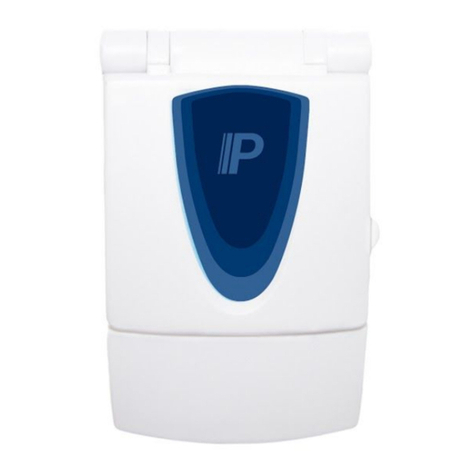WARNINGS AND PRECAUTIONS
Warnings
- Read these instructions carefully to ensure proper use of the Parasym device.
- Do not inhale or swallow small parts.
- Do not wrap the lead wire around the neck.
- Do not apply stimulation in the bath or shower or while sleeping.
- Do not get the Parasym device wet.
- Do not apply stimulation while driving, operating machinery, or during any activity in which
electrical stimulation can put the patient at risk of injury.
- Do not apply stimulation over open wounds or rashes, or over swollen, red, infected, or inflamed
areas or skin eruptions (e.g., phlebitis, thrombophlebitis, varicose veins).
- Do not apply stimulation over, or in proximity to, cancerous lesions.
- Do not apply stimulation over the patient’s neck or mouth because this could cause severe
muscle spasms resulting in closure of the airway, difficulty in breathing, or adverse effects on
heart rhythm or blood pressure.
- Do not apply stimulation across the patient’s chest, because the introduction of electrical current
into the chest may cause rhythm disturbances to the patient’s heart, which could be lethal.
- Do not apply electrodes near the thorax because the introduction of electrical current may
increase the risk of cardiac fibrillation.
- Stimulation should not be applied across or through the head, directly on the eyes, covering the
mouth, on the front of the neck, (especially the carotid sinus), or from electrodes placed on the
chest and the upper back or crossing over the heart.
- Use this device only with the electrodes, and accessories recommended by the manufacturer as
using others may be unsafe. Any electrodes that have current densities exceeding 2 mA/cm2 may
require special attention of the operator.
- Potential hazard from simultaneous connection of a patient to a high frequency surgical ME
equipment and the device that may result in burns and possible damage to the device.
- Operation in close proximity (e.g. 1 m) to a shortwave or microwave therapy ME equipment may
produce instability in the stimulator output.
- The long-term effects of the chronic use of the device have not been evaluated.
- Contact your healthcare provider (HCP) if your symptoms worsen.
- Electronic monitoring equipment such as EKG alarms may not operate properly when the
Parasym device is in close proximity while being used.
- Consult with your HCP before use because the device may cause changes in cardiac rhythm.
Safety and efficacy of the Parasym device have not been evaluated in the following patients, and
therefore it is not indicated for:
- Patients with an active implantable medical device, such as a cardiac pacemaker, hearing aid
implant, or any implanted metallic or electronic device
- Patients with a history of baseline cardiac disease or atherosclerotic cardiovascular disease,
including congestive heart failure (CHF), known severe coronary artery disease or recent
myocardial infarction (within 5 years).
- Patients with diagnosed bradycardia or an irregular heart rhythm.
- Patients who have had surgery to cut the vagus nerve in the neck (cervical vagotomy).
- Patients diagnosed with narrowing of the arteries (carotid atherosclerosis).
- Patients whose pain syndromes are undiagnosed.
- Pediatric patients.
- Pregnant women.
3





























